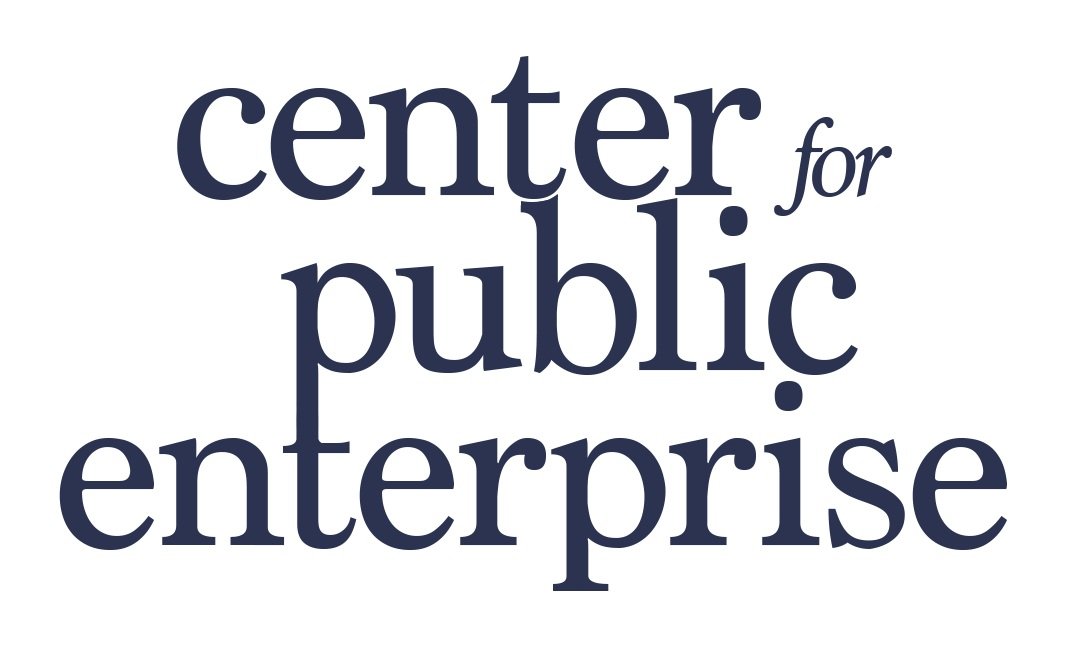The Basic Logistics of Public Development
Over the past week, a flurry of pieces were published on publicly developed housing. First in Slate, then NYTMag, and later two critical responses to these pieces from Matt Yglesias at Bloomberg and his blog.
There’s been a lot of loose talk about politics, feasibility, and competency, but very little about financing, program design, and logistics. In this post we’ll dive into those admittedly knottier topics to elucidate what we’ve concluded some pundits are missing about public development in the United States. And we’ll make the case for why some should reconsider their position.
Affordable Housing Finance 101
Let’s begin with an affordable housing finance primer so that we can understand the core methods and constraints. First off, what is affordable housing?
Affordable housing is any home that is rented or sold, as a matter of policy, such that the occupant household pays no more than 30% of their income toward their rent or mortgage.
This includes housing built or managed under a litany of programs across the country, from the federal level on down to the local: Low-Income Housing Tax Credit rental housing, rental vouchers, and even local inclusionary zoning laws.
Zoning and land use regulations are a core barrier to total housing production, but for affordable housing, the core constraint on production is the availability of subsidies from the federal government to pay for that housing: namely, the Low-Income Housing Tax Credit and the Housing Choice and Project-Based Vouchers. Let me say that again to drive it home: the production of affordable housing in the United States faces one primary constraint: the availability of Congressionally-appropriated subsidy dollars from the federal government.
First, a quick primer on those two primary programs:
Low-Income Housing Tax Credit (LIHTC)
The LIHTC, established in 1986 as a part of the Reagan administration’s Tax Reform Act, sought to incentivize private capital investment in affordable housing production.
The IRS gets a total allocation of the tax credits each year and splits them up across the country based on population. The agencies that receive the tax credits (mostly state housing finance agencies) award them to affordable housing projects. The affordable housing developer responsible for the project then, typically through a third party syndicator, sells those tax credits to an investor. The purchase of the tax credits generates equity (cash) that is invested into the project.
The core outcome here is that for, say, a $50 million project, the tax credit sale may generate $20 million in equity. That means that the mortgage on the project can be reduced to $30 million, which lowers the monthly payments that the affordable housing developer needs to make on their debt service. Think of it as akin to a down payment on a home: the larger the down payment, the lower your monthly payments will be. For an affordable housing developer this means that they can rent the units at affordable prices while still being able to cover their costs.
Housing Choice and Project-Based Vouchers
The voucher programs, administered by HUD and its network of 3,000+ public housing authorities across the country, work in a slightly different way.
Rather than putting money up front at construction time, vouchers are a guarantee of rental income over the long term. Tenants pay 30% of their income toward rent, and HUD tops up those tenant payments to help affordable housing owners cover the costs on their larger mortgage payments.
Both of these programs have budgets determined annually by Congress. And again, nearly every jurisdiction in the country uses their full allotment each cycle. If you want more affordable housing production you have two options: get Congress to give more money to these programs, or find a way to develop additional affordable housing that doesn’t require these subsidies.
Enter Montgomery County, Maryland’s Housing Opportunities Commission.
The Montgomery County Public Development Model
The Housing Opportunities Commission of Montgomery County, Maryland (for context: Montgomery County is the most populous county of Maryland, just outside of DC) is both a HUD-affiliated public housing authority and housing finance agency. It has a $1 billion balance sheet comprised mostly of multifamily housing assets. Much of that housing is federally supported either with LIHTCs or vouchers, but over the past few years HOC has taken another approach on top of its conventional affordable housing work: building its own projects without federal subsidies.
In 2021, the county council issued a $50 million, taxable, 20-year municipal bond. The proceeds of that bond sale were deposited into a newly created bucket: the Housing Production Fund. The purpose of the fund is to make short-term, construction-period bridge loans to new, multifamily housing projects developed by the agency. This loan product offered by the agency is the key ingredient to make its public development projects work, and to show why that’s the case we’ll need to provide a little back story.
In 2015, the agency decided to develop multifamily housing on a parcel that it owned near a transit station. For that project, it didn’t use any federal subsidies. In order to secure a senior loan, it needed an equity partner. The agency was able to secure a private equity investment, but that investment came with some costs: a required rate of return in the mid- to high-teens, and a sizable ownership stake for the equity investor. That means the agency couldn’t afford to put as many affordable units in the project as it would have wanted to, and that it has to split the perks of ownership (cashflow, ability to set policy) with a party that doesn’t share its mission.
To replace that equity investment portion of the capital stack, the agency came up with the revolving loan approach. Instead, they make those short term loans themselves into their own projects. This does two things: lowers the cost of capital, opening up more room for affordable units; and helps the agency to take the majority or outright ownership position. Below is a diagram from the agency illustrating the financing logistics of the program.
The first project completed using this new fund, The Hurston, is a 268-unit multifamily complex directly adjacent to the Shady Grove Red Line WMATA station. The building includes 81 apartments affordable to households between 50% and 65% of the area median income. Importantly, that’s roughly equivalent to the average LIHTC-funded affordable housing project in the area. So, without using any LIHTCs, vouchers, or grants, the agency produced a LIHTC-project’s worth of affordable housing.
If you give a man a self-financed affordable housing project, you can house hundreds of families. If you teach a man to run a self-financed affordable housing program, you can house tens or hundreds of thousands. So how does a program like this scale up? Montgomery County recently doubled the size of its fund with a second taxable bond issuance. And importantly, the payments that the county makes on those bonds are almost entirely covered by interest returned to the county from the fund’s housing investments. The net cost to the county for a major affordable housing production program amounts to a rounding error: about 0.01% of the county’s annual operating budget.
The Benefits and Role of Public Development Programming
There are a few reasons this type of public development is useful for housing markets. First, these programs can help optimize the allocation of scarce federal subsidies. Second, they are, in essence, a form of inclusionary zoning without the downside risk to housing production. Third, they can push against the hyper-cyclicality of housing production.
Optimizing scarce federal subsidy allocation
Today, the LIHTC is intended to serve everyone from 0% to 80% of the area median income. That’s a huge band of households—definitionally, it’s almost half of the households in a jurisdiction—and the funding appropriated by Congress is nowhere near the levels where all of those household housing needs could be met.
By building cross-subsidized buildings that don’t require tax credits, serving households at the top half of that range, jurisdictions can prioritize their limited federal dollars for the the bottom half of the range where the subsidies are crucial. If we can produce affordable housing for a portion of that range without tax credits, why would we spend those scarce tax credits on it? Operationalizing an approach like this will require coordination between tax credit allocators (housing finance agencies) and public developers (public housing authorities and other public development corporations), but the benefit to housing production is palpable.
Active, as opposed to passive, inclusionary zoning
Under the typical inclusionary zoning program, developments that can only proceed if a jurisdiction makes a zoning or code exemption for the project are required to include a certain percentage of affordable units in the building, or, occasionally, pay an in-lieu fee to an affordable housing fund. There is evidence on both sides of these programs showing that they are effective, or that they constrict housing production. Either way, finding the appropriate percentage of affordable housing that maximizes production is no easy task. And in a complex market like real estate development, that ratio likely changes from season to season or year to year.
Montgomery County’s approach is a little different. Instead, they take the active approach: underwrite a proposed development and determine the maximum amount of affordable housing that can be provided in that particular project at that particular time that allows the project to acquire financing and remain viable long-term. And without third party equity investors who require high hurdle rates to be met, the agency is able to get more affordable housing than a private inclusionary development anyway.
Gently pushing against hyper-cyclicality
A third benefit is a counter-cyclical push on housing production. As Edward Leamer memorably proclaimed in his now-famous “Housing IS the Business Cycle” paper, housing production is a major, even driving, factor of the broader economy. Below, one can easily see an inverted relationship between two core economic measures, the unemployment rate, and housing starts.
In fact, in the case of The Hurston, Montgomery County’s first project completed with its Housing Production Fund, counter-cyclicality was at work. The project began as an entirely private development by two real estate firms, EYA and Bozzuto. When the project ran into issues securing financing due to economic conditions, the public developer stepped in with a proposal: we’ll provide the financing to close this deal and get it built. In exchange, we’re going to become the majority owner and make the calls on affordability and policy.
As a result, 268 units right next to a train station that might never have been built are now occupied by Maryland families, and the level of affordability is triple what would have been required by law. Scaling this up, it’s easy to see how such programs can help with long-term housing production goals across the business cycle.
Conclusions and Forthcoming
Here we’ve laid out the basics of what one public housing authority is doing to innovate in the housing production space, but we’ve only scratched the surface of the model and what’s possible with it. Over the summer we’ll be publishing more deep dives on various aspects of public development, including how agencies, authorities and legislatures across the country are working to implement similar approaches; more detailed accounts of the financial models; and considerations around regulatory and approval processes.
We think the case for this model is clear, and the early outcomes are undeniably promising. Critics of the public sector approach would do well to familiarize themselves with these finer details if they want to construct critiques that hold any water. As of today, we’ve yet to see any that do.



